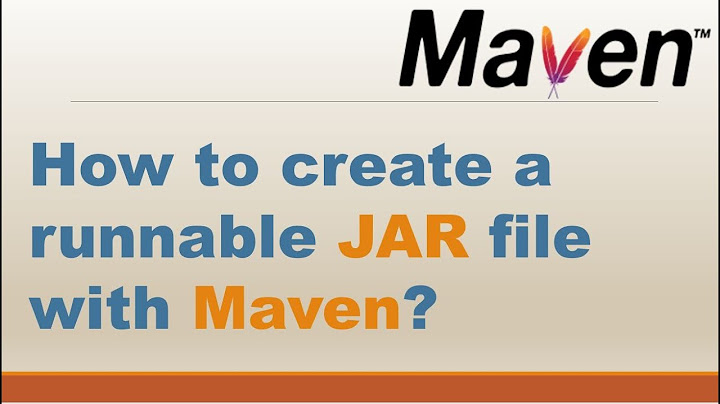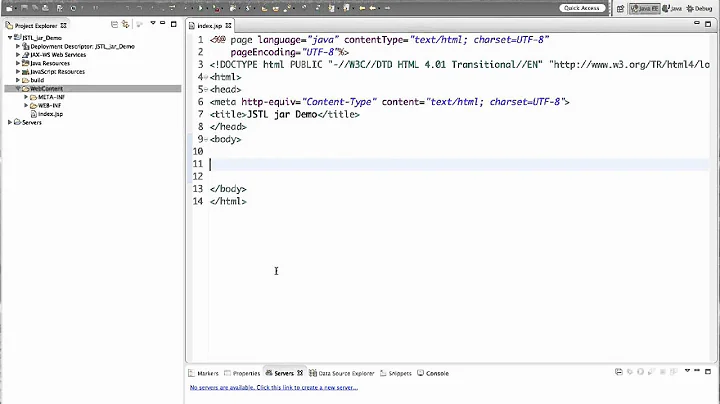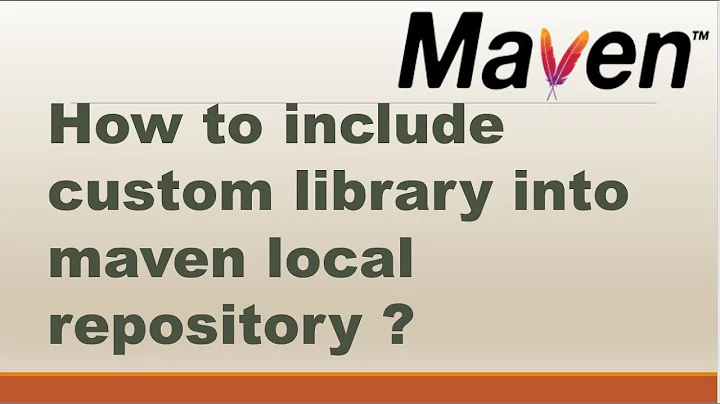How to add TLD and Tag Lib files into a Maven's jar project
Solution 1
The practice these days is to put the TLD files into the tag library JAR and let the class loader find them. Download the Apache JSTL JARs and see how they do it. I'd recommend following that convention. It'll simplify your app too, because you won't have to declare the TLD in your web.xml file: just put the JAR in your CLASSPATH and make sure that the URI in your .jsp matches that in the TLD.
Solution 2
@duffymo - Your solution totally works. Adding graphic to your description.
Create a maven project that generates JAR. keep the structure like this below
src -- main
|-- java
| `-- net
| `-- madhur
| `-- helloTag.java
`-- resources
`-- META-INF
`-- tags
`-- customTags.tld
To your customTags.tld file add uri something like this
<uri>http://www.xyzabc.com/taglibs/customTags</uri>
Accessing tags in you WAR file
War should have following structure
META-INF/
META-INF/MANIFEST.MF
WEB-INF/
WEB-INF/classes/
WEB-INF/lib/
WEB-INF/lib/{tagLibrary}.jar
WEB-INF/web.xml
WEB-INF/customTags.tld
web.xml
<jsp-config>
<taglib>
<taglib-uri>www.xyzabc.com/taglibs/customTags</taglib-uri>
<taglib-location>/WEB-INF/customTags.tld</taglib-location>
</taglib>
</jsp-config>
Using tag in FTL or JSP file
Ftl:
<#assign ct = JspTaglibs["www.xyzabc.com/taglibs/customTags"]>
Related videos on Youtube
bluefoot
Java developer trying to get back to SO as soon as possible.
Updated on June 04, 2020Comments
-
bluefoot almost 4 years
I have a Maven project that is packaged as
jar.And I also have a Maven project that is packaged as
war. This war project has a tld file and some xhtml files (the tag libs). The structure of the war project is (basically):pom.xml src main java ... webapp WEB-INF my-facelets.taglib.xml facelets aTag.xhtml anotherTag.xhtml META-INF my-facelets.taglib.tldAnd then appeared a requirement to remove those xml, xhtml and tld files from the war project and package them into the jar project. So my first try was add in the jar project's POM:
<resources> <resource> <directory>src/main/tld</directory> <targetPath>META-INF</targetPath> </resource> <resource> <directory>src/main/taglib</directory> <targetPath>WEB-INF</targetPath> </resource> </resources>And put the files, of course, into
src/main/tld(the ones I wanted to export intoMETA-INF) andsrc/main/taglib(the ones I wanted to export intoWEB-INF). And the jar was created as I wish:myjar com my classes WEB-INF META-INF my-facelets.taglib.tld WEB-INF ...And then I added this new jar to my first war project, as a maven dependency.
The problem is that those .tld, .xhtml, .xml files that are inside the jar's META-INF, WEB-INF (the jar is inside war's
WEB-INF/lib) are not recognized. Apparently they should be directly into the war structure, unless some other configuration is performed. This is a must-have requirement, because multiple war projects will use the features (classes and taglibs) of the jar project. -
bluefoot about 13 yearsI was thinking too of downloading something an see how they do. I'll check it out and post the results.
-
bluefoot about 13 yearsit works correctly. No need to declare anything into Manifests. Just inserting all the files inside jar's
META-INFand letting maven build the war (with the jar inside it'sWEB-INF/lib) did the trick. The error was the<targetPath>of my second<resource>element.






